Cost-saving technologies in agriculture, such as automation, energy efficiency, and advanced crop management, are transforming the industry by enhancing productivity and reducing expenses. Automation streamlines processes and minimizes labor needs, while energy-efficient systems lower operational costs and promote sustainability. Additionally, crop management software empowers farmers to make informed decisions, optimize resource use, and ultimately maximize yields.
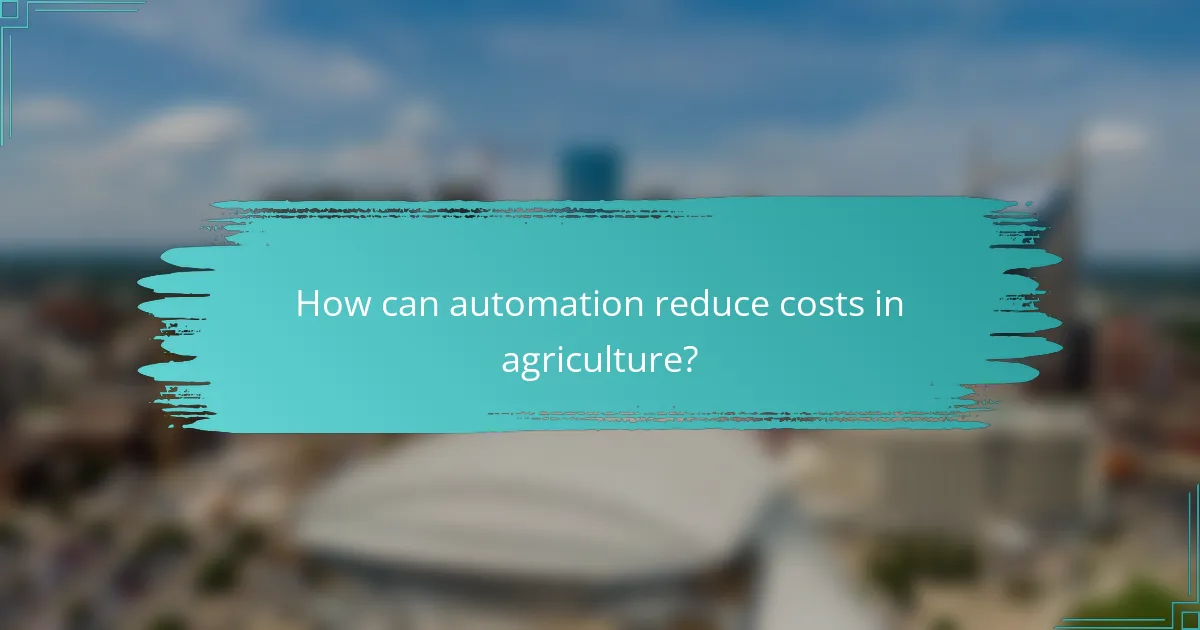
How can automation reduce costs in agriculture?
Automation can significantly lower agricultural costs by streamlining processes, reducing labor needs, and enhancing efficiency. By implementing automated systems, farmers can optimize resource use, minimize waste, and ultimately increase profitability.
Robotic harvesters
Robotic harvesters are machines designed to pick crops with minimal human intervention. These devices can operate continuously, working faster than manual laborers and reducing the cost of labor significantly.
For example, robotic harvesters can be particularly effective in large-scale fruit and vegetable farms, where they can reduce harvesting time by up to 50%. Investing in these machines may require upfront capital, but the long-term savings on labor costs can be substantial.
Automated irrigation systems
Automated irrigation systems use sensors and timers to deliver precise amounts of water to crops, ensuring optimal growth while conserving water. This technology can reduce water usage by up to 30%, leading to lower utility bills and improved crop yields.
Farmers should consider integrating soil moisture sensors and weather data into their irrigation systems to maximize efficiency. Regular maintenance of these systems is essential to prevent malfunctions that could lead to over- or under-watering.
Precision planting technology
Precision planting technology involves using GPS and data analytics to ensure seeds are planted at the optimal depth and spacing. This method can enhance crop density and improve overall yield, ultimately reducing costs associated with seed waste.
Farmers can benefit from using variable rate technology (VRT) to adjust seed quantities based on soil conditions. This approach not only saves on seed costs but also promotes healthier crops by avoiding overcrowding.
Data analytics for yield optimization
Data analytics tools help farmers analyze various factors affecting crop yield, such as soil health, weather patterns, and pest activity. By leveraging this data, farmers can make informed decisions that lead to increased productivity and reduced costs.
Implementing data analytics can involve using software platforms that integrate information from multiple sources. Farmers should focus on key performance indicators (KPIs) to track improvements and adjust practices accordingly for maximum efficiency.
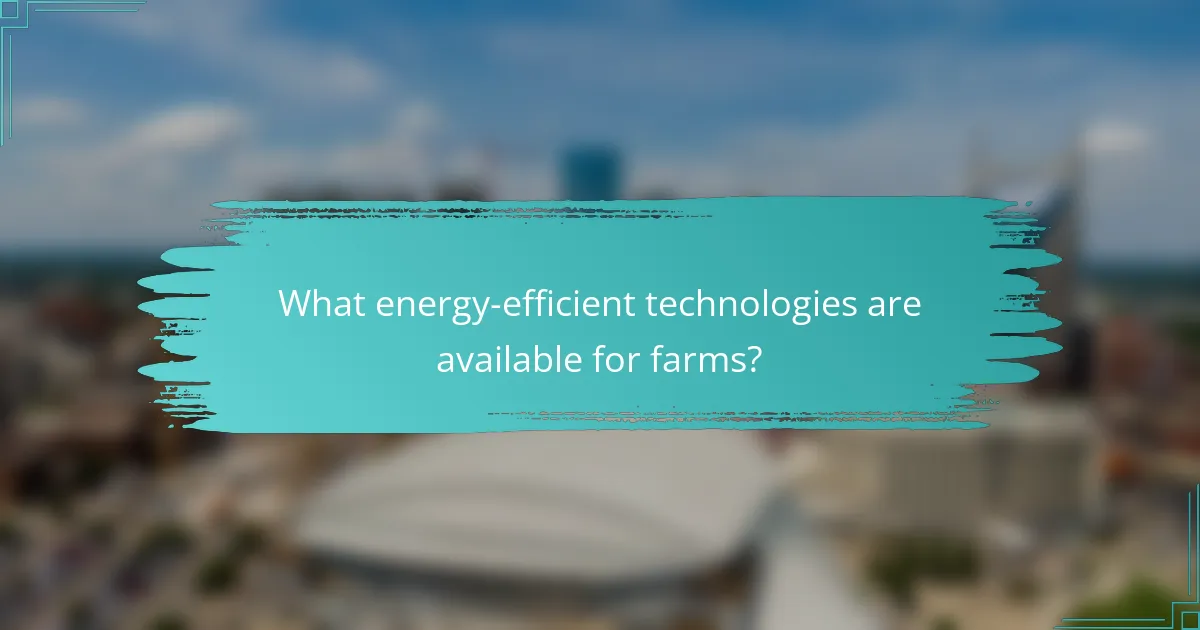
What energy-efficient technologies are available for farms?
Energy-efficient technologies for farms include systems that reduce energy consumption while maintaining productivity. These innovations can significantly lower operational costs and improve sustainability in agricultural practices.
Solar energy systems
Solar energy systems harness sunlight to generate electricity, which can power various farm operations. By installing solar panels, farms can reduce reliance on grid electricity, leading to lower energy bills and a reduced carbon footprint.
When considering solar energy, evaluate the initial installation costs against long-term savings. Many farms can benefit from government incentives or subsidies, which can offset upfront expenses. A typical system might pay for itself within 5 to 10 years, depending on local energy prices and sunlight availability.
LED grow lights
LED grow lights are energy-efficient lighting solutions that provide the necessary spectrum for plant growth while consuming less electricity than traditional lighting. These lights can reduce energy costs by up to 75% compared to incandescent or fluorescent options.
When selecting LED grow lights, consider the specific light spectrum needed for different growth stages. Investing in high-quality LEDs can lead to faster growth rates and higher yields, making them a cost-effective choice for indoor and greenhouse farming.
Energy-efficient HVAC systems
Energy-efficient HVAC systems regulate temperature and air quality in agricultural facilities, using less energy than conventional systems. These systems often include advanced features like variable speed fans and smart thermostats that optimize energy use based on real-time conditions.
Upgrading to an energy-efficient HVAC system can lead to significant savings on heating and cooling costs. Look for systems with high Seasonal Energy Efficiency Ratio (SEER) ratings, as these indicate better energy performance. Regular maintenance is crucial to ensure efficiency and longevity, so schedule routine checks to avoid costly repairs.
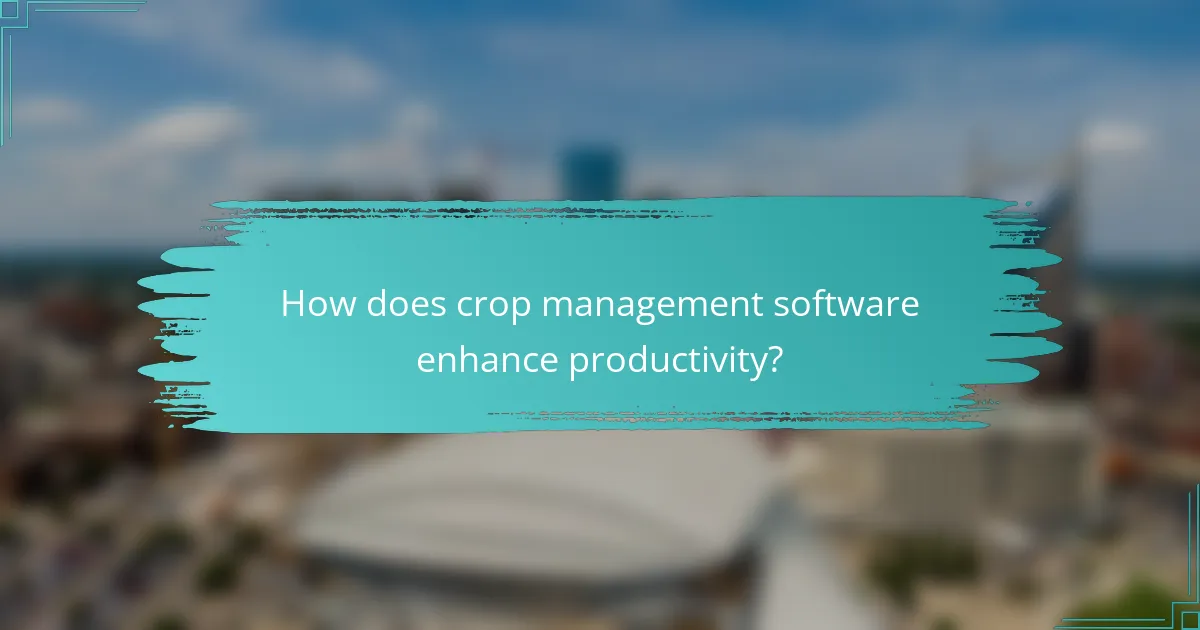
How does crop management software enhance productivity?
Crop management software enhances productivity by streamlining agricultural processes, improving decision-making, and optimizing resource use. These tools help farmers monitor crop health, manage inputs, and analyze data to maximize yields and reduce costs.
Field mapping tools
Field mapping tools allow farmers to create detailed maps of their fields, identifying variations in soil type, moisture levels, and crop health. By visualizing these factors, farmers can make informed decisions about where to plant specific crops and how to allocate resources effectively.
Using GPS technology, these tools can help in precision agriculture, enabling targeted application of fertilizers and pesticides. This not only saves costs but also minimizes environmental impact by reducing chemical runoff.
Pest management applications
Pest management applications assist farmers in monitoring pest populations and predicting outbreaks. By analyzing historical data and current conditions, these tools can recommend timely interventions, such as targeted pesticide applications or biological control measures.
Implementing these applications can lead to significant cost savings by reducing unnecessary pesticide use and minimizing crop damage. Farmers should regularly update their pest management strategies based on real-time data to stay ahead of potential threats.
Crop rotation planning software
Crop rotation planning software helps farmers design effective crop rotation schedules to enhance soil health and optimize yields. By rotating crops, farmers can reduce pest and disease pressure, improve soil fertility, and increase biodiversity.
These tools often include features that analyze soil nutrient levels and suggest suitable crops based on previous plantings. Farmers should consider local climate conditions and market demand when planning rotations to maximize profitability and sustainability.
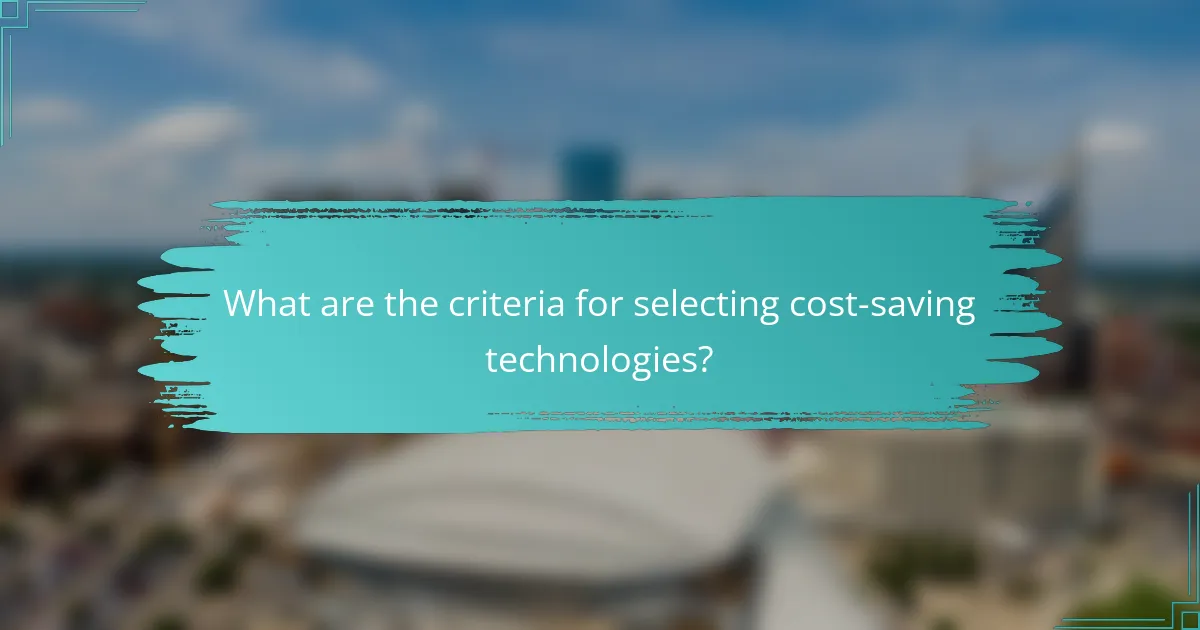
What are the criteria for selecting cost-saving technologies?
When selecting cost-saving technologies, it’s essential to evaluate their potential impact on operational efficiency and overall savings. Key criteria include return on investment, scalability, and alignment with specific business needs.
Return on investment analysis
Return on investment (ROI) analysis is crucial for assessing the financial benefits of implementing cost-saving technologies. It involves calculating the expected gains from the technology against its costs, allowing businesses to determine if the investment is worthwhile.
To perform an ROI analysis, consider both direct and indirect savings. For example, automation may reduce labor costs while also increasing productivity, leading to higher overall revenue. A common heuristic is to aim for an ROI of at least 20-30% within the first year of implementation.
Scalability of solutions
Scalability refers to a technology’s ability to grow and adapt as business needs change. When evaluating cost-saving technologies, consider whether they can be easily expanded or modified without significant additional costs.
For instance, energy-efficient systems should be able to accommodate increased production levels without requiring a complete overhaul. Look for solutions that offer modular components or cloud-based services, which can be adjusted as demand fluctuates. This flexibility can prevent future financial strain and ensure long-term viability.
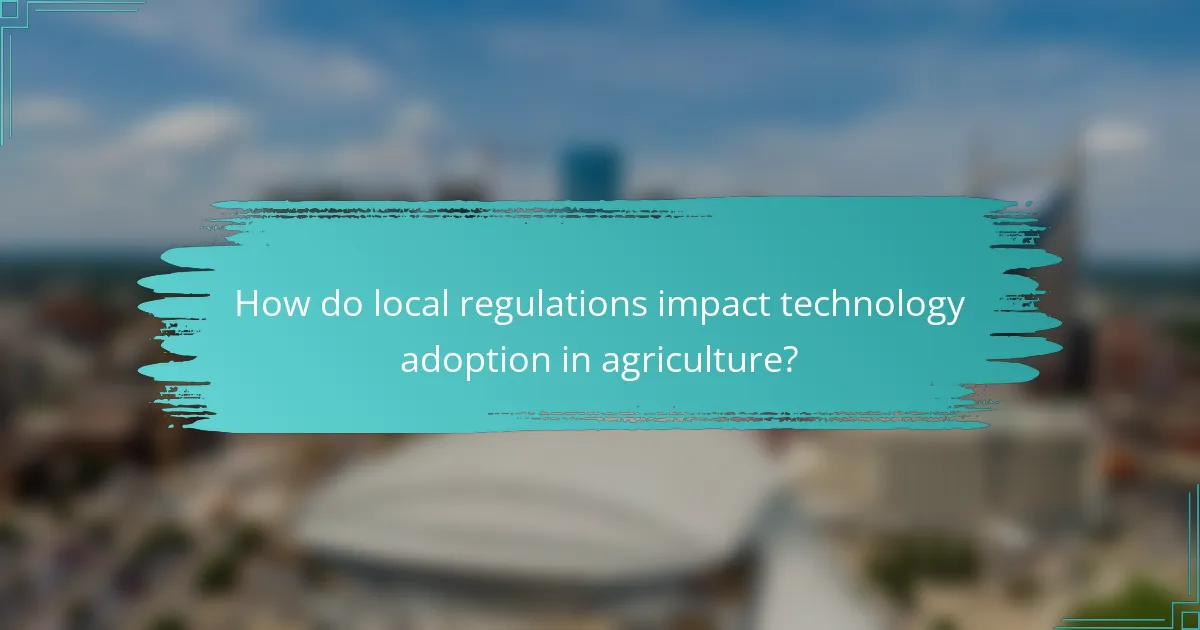
How do local regulations impact technology adoption in agriculture?
Local regulations significantly influence the adoption of technology in agriculture by establishing standards that farmers must meet. These regulations can either facilitate or hinder the integration of advanced technologies, depending on their design and enforcement.
Compliance with environmental standards
Compliance with environmental standards is crucial for farmers looking to adopt new technologies. Regulations often require adherence to specific practices that minimize environmental impact, such as reducing pesticide use or managing water resources efficiently. Non-compliance can result in fines or restrictions, making it essential for farmers to stay informed about local laws.
For example, in the European Union, the Common Agricultural Policy (CAP) encourages practices that align with sustainability goals. Farmers may need to invest in technologies that monitor soil health or optimize irrigation to meet these standards.
Incentives for sustainable practices
Many local governments offer incentives to encourage sustainable agricultural practices, which can facilitate technology adoption. These incentives may include grants, tax breaks, or subsidies for farmers who implement energy-efficient systems or precision agriculture technologies.
In the United States, programs like the Environmental Quality Incentives Program (EQIP) provide financial assistance for adopting conservation practices. Farmers can leverage these incentives to offset the costs of new technologies that enhance productivity while adhering to environmental regulations.
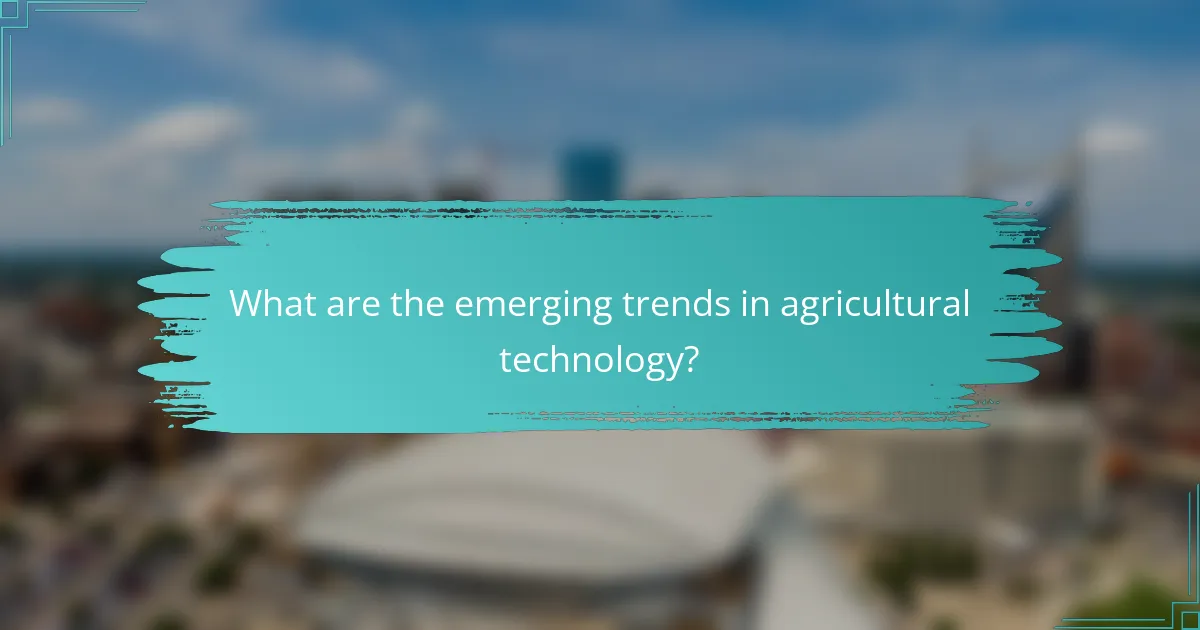
What are the emerging trends in agricultural technology?
Emerging trends in agricultural technology focus on automation, energy efficiency, and advanced crop management techniques. These innovations aim to enhance productivity while reducing costs and environmental impact.
Automation in Agriculture
Automation in agriculture involves using technology to perform tasks that traditionally require human labor. This includes the use of drones for monitoring crops, robotic systems for planting and harvesting, and automated irrigation systems. By implementing automation, farmers can significantly reduce labor costs and increase efficiency.
For instance, automated tractors can operate with minimal human intervention, allowing farmers to cover large areas quickly. Additionally, precision agriculture tools help in applying fertilizers and pesticides more accurately, which can lead to cost savings and improved crop yields.
Energy Efficiency Solutions
Energy efficiency solutions in agriculture focus on reducing energy consumption while maintaining productivity. This can involve upgrading equipment to more energy-efficient models, utilizing renewable energy sources, or implementing energy management systems. These strategies can help farmers lower their energy bills and reduce their carbon footprint.
For example, solar panels can be installed on farms to power irrigation systems, reducing reliance on grid electricity. Additionally, energy-efficient lighting and heating systems in greenhouses can lead to significant savings over time.
Crop Management Technologies
Crop management technologies encompass a range of tools and practices aimed at optimizing crop production. This includes data analytics for monitoring soil health, weather patterns, and crop performance. By leveraging these technologies, farmers can make informed decisions that enhance crop yields and sustainability.
Using software platforms that integrate data from various sources allows farmers to identify trends and make timely interventions. For example, soil sensors can provide real-time data on moisture levels, enabling precise irrigation that conserves water and improves crop health.
